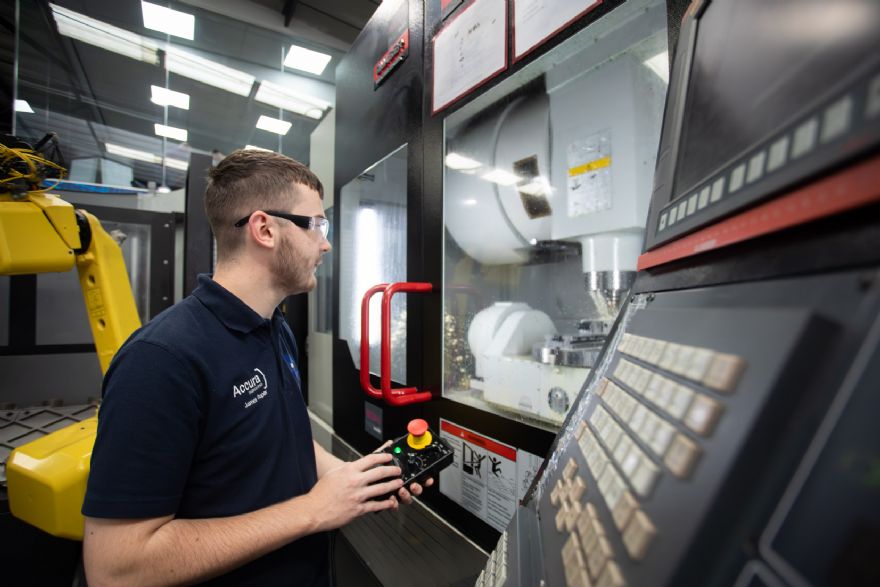
The UK manufacturing sector returned to growth in May, as output expanded at the quickest pace in over two years on the back of improved intakes of new work. The outlook also brightened as manufacturers' positive sentiment rose to its highest level since early-2022, with 63% of companies
expecting output to expand over the coming year.
The seasonally adjusted
S&P Global UK Manufacturing Purchasing Managers’ Index (PMI) rose to 51.2 in May, up from 49.1 in April, its highest reading since July 2022 but a tick below the earlier flash estimate of 51.3. The headline PMI has now posted above the neutral 50 mark in two out of the past three months.
May saw manufacturing production expand at the quickest rate since April 2022, with the upturn broad-based by both sector and company size. All three product categories covered by the survey (consumer, intermediate and investment goods) and all three size definitions (small, medium and large) registered concurrent expansions for the first time in over two years.
Stronger market conditionsOutput growth was underpinned by improved intakes of new work, stronger market conditions and efforts to complete existing contracts. The level of new business placed with UK manufacturers rose for the second time in the past three months and to the greatest extent since April 2022.
The upturn in demand was centred on the domestic market, as new export orders fell for the 28th month in a row. There were reduced inflows of new work from several trading partners, including the US, the EU (with specific mentions of Germany and Poland) and the Middle East. That said, the rate of contraction was the joint-weakest in the current sequence of decline (matching March 2022).
Business confidence improved in tandem with the recovery in current market conditions. Manufacturers reported the highest degree of optimism regarding the one-year ahead outlook for production volumes since February 2022. Positive sentiment was linked to hopes that continued economic recovery, promotional efforts and improved export orders would all support growth in the future. However, some firms also noted concerns about political and economic uncertainty (both at home and overseas).
Considerations relating to operating efficiency, cost management and lean production remained at the forefront of manufacturers decision making during May. Employment was reduced for the 20th successive month, while inventories of finished goods and purchases were both depleted. Input buying increased slightly during May, halting a 22-month sequence of reduced purchasing activity. Suppliers' delivery times lengthened for the fifth month running, mainly due to transportation issues such as the ongoing crisis in the Red Sea.
May saw average input costs increase for the fifth successive month, albeit to a lesser extent than in April. Manufacturers reported a wide range of items as up in price, including chemicals, metals, paper, polymers, pulp products and timber.
Sector data painted a mixed picture for trends in purchasing costs. While intermediate goods producers saw input prices rise at the quickest rate in almost 1.5 years, cost inflation eased sharply in the consumer goods category. The investment goods sector saw purchasing costs decrease for the first time in the year so far. After strengthening in each of the past five months, May saw the rate of output price inflation hit its highest level in a year. Rates of increase accelerated in the consumer and intermediate goods sectors, but eased at investment goods producers.
Solid revival of activityRob Dobson, director at S&P Global Market Intelligence, said: “May saw a solid revival of activity in the UK manufacturing sector, with levels of production and new business both rising at the quickest rates since early-2022. The breadth of the recovery was also a positive, with concurrent output and new order growth registered for all of the main sub-industries (consumer, intermediate and investment goods) and all company size categories for the first time in over two years.
“While the latest upturn was dependent on a strengthening domestic market, there were signs of overseas demand also moving closer to stabilisation. Business optimism rose in tandem with the improvement in current conditions, with 63% of manufacturers forecasting their output to be higher one year from now. The latest PMI survey data provided a mixed picture for price pressures at manufacturers, however. At the factory gate, output charge inflation strengthened for the fifth successive month and to its highest level in a year. That said, a solid easing in the rate of increase in input costs should help prevent price pressures from becoming embedded.”
Ginni Cooper, partner at MHA, said: “Manufacturing PMI has held above 50 for the third consecutive months, which means the sector is heading in the right direction. However, ongoing concerns about high interest rates are stifling the flow of money into our manufacturing clients. The continued uncertainty around when UK interest rates might be cut means that businesses remain reluctant to invest. After some of the challenges of the last few years, the announcement of the general election and the relatively short period of campaigning is welcome news for the manufacturing sector, as after 5 July there will be some certainty at last for business, whichever party is in power.
“The manufacturing industry is looking to the next Government to introduce a long-term industrial strategy to drive growth, which is critical to re-energise the sector. Any plans will need to look at investing in skills as well as infrastructure which will allow manufacturing businesses to be proactive and look forward to the future rather than just being reactive.”